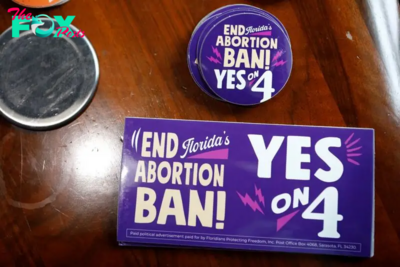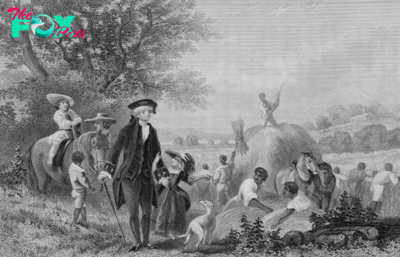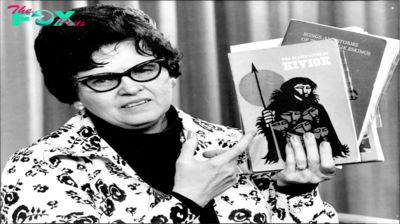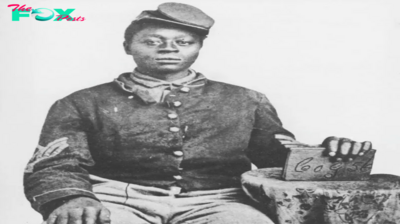History
The 1950s Burlesque Dancer Who Challenged Florida’s Anti-LGBTQ Dynamics
Earlier this month, Florida settled a lawsuit filed by several LGBTQ rights groups against the law popularly known as “Don’t Say Gay.” The settlement clarifies that the law does not fully prohibit students and teachers from discussing sexual orientation and gender identity in the classroom, although it does exclude such discussions as part of official instruction. This means that anti-bullying lessons and the meeting of Gay-Straight alliance groups, for example, can indeed take place.
The controversial law, along with several others in Florida, has been a main feature of Republican Governor Ron DeSantis’ culture war-driven administration. Much like the work of LGBTQ groups and activists today, the historical record is chock full of LGBTQ people who have resisted such efforts to criminalize and erase any trace of them—even as they are excluded from textbooks and History lessons.
One notable person who exemplifies this tradition of historical resistance is a lesbian burlesque dancer known as Zorita, whose life story and career flew in the face of the anti-LGBTQ political climate she lived in. Reviving her story today serves as a reminder of the power of individuals to affect change and to resist efforts to censor or diminish LGBTQ lives and experiences.
Born Ada Brockette in Youngstown, Ohio, in 1915, the woman who became known as Zorita was adopted as an infant by a strict Methodist couple. Rebelling against the wishes of her adoptive parents, she began her career in burlesque as a teenager.
In the 1930s, Zorita worked as part of a traveling nudist carnival under the name “Princess Zorita,” and, by World War II, she had become a popular “pin-up” girl. Several magazines featured scantily clad images of her. A 1942 issue of Pictorial Movie Fun gave its readers an inside look at Zorita’s home life. It noted how women like Zorita were “building up morale on the home front,” reminding American soldiers of what they were fighting for.
Read More: You Just Don't Silence a Drag Queen
After gaining prominence in the New York City nightlife scene, she moved to Miami in the early 1950s. In this rapidly growing city, she became a staple in the city’s tourist-driven nightlife, performing in some of Miami and Miami Beach’s hottest nightspots such as the Gaiety Club and Martha Raye’s Five O’clock Club.
Because so much of Miami’s economy was dependent on tourism, the city hosted a vibrant nightlife culture where sexual and gender non-conformity—including performances by LGBTQ people—proved very popular, even as city politicians passed laws that sought to ban it. Miami was also a racially segregated city where Jim Crow reigned supreme.
Although Zorita performed and catered primarily to male audiences throughout her career, she did not seek their affection in her personal life. She preferred the company of women and today she would likely identify as a lesbian. In Miami, which had a thriving if not heavily policed LGBTQ culture by the 1940s, Zorita coyly adopted a sexual ambiguity in public, always stressing her feminine wiles, while also having an active circle of gay friends and women lovers.
Although Zorita generally emphasized her femininity on stage and in her private life, she also blurred the boundaries of what was deemed acceptable, desirable, and even legal in an era when LGBTQ culture, especially cross-dressing, was often criminalized. Zorita gained national notoriety for her “half and half” dance and strip tease. Wearing an outfit that was half of a woman’s wedding gown and half of a man’s formal tuxedo, she would consummate her gendered marriage to herself on stage. She did this at a time when city ordinances in Miami and Miami Beach prohibited “impersonations” on stage to crack down on what politicians saw as a growing “homosexual problem.”
By the time she moved to Miami, traditional burlesque had waned in popularity and had given way to more hardcore nudity and strip shows. Zorita combined these worlds and her growing national reputation to great success and acclaim.
Famed burlesque dancer Gypsy Rose Lee always said entertainers needed to have a gimmick—a concept memorialized years later in the song “You Gotta Have a Gimmick” in the 1959 musical and later 1962 film Gypsy, which was loosely based on her life—and Zorita took that advice to heart. That is why she associated herself with snakes, which she regularly featured in her strip and dance routines. She had a boa constrictor that she took for a “walk” on a leash down the streets of Miami Beach—all part of her mastery in getting media attention—and police arrested and fined her for it.
Acts like Zorita’s also banked on Miami’s proximity and close ties to the Caribbean and Latin America, including the titillating offerings tourists could find there as a result of U.S. imperialism. Having changed her stage name to the Spanish-sounding Zorita very early on in her career, her “Cuban Circus” revue tapped into racialized ideas of a sexualized Caribbean woman that her mostly white audiences sought out when they visited Miami. She continued this trend when she bought and opened her own club in 1964, Zorita’s Show Bar.
Read More: What People Get Wrong About the History of Bisexuality
At other times, much like she did with the laws banning gender-bending performances, Zorita challenged Jim Crow racial segregation and a broader culture of anti-Blackness in Miami. She hired Black and Latina women and seems to have performed to integrated audiences. In the mid-1960s, she lived in the white suburb of North Bay Village, where she received complaints from several of the neighbors’ wives that their husbands were ogling her through the bushes. A year after the passage of the 1964 Civil Rights Act, she defied ordinances that prohibited lawn signs and that sought to keep the neighborhood white. She placed a for-sale sign in her front yard that read: “For Sale: White or Colored.” She told reporters, “I love people not for the color of their skin.”
By the late 1970s, just as Zorita ebbed into retirement age, Miami had become a battleground for the nation’s culture wars. Much like today, this movement was in no small part defined by LGBTQ rights. In 1977, it was signaled by the “Save Our Children” campaign, which removed legal protections for lesbians and gays in Miami. That effort was led by Anita Bryant, whom Zorita referred to as a “simple bitch.”
By 1980, Zorita and her female partner left Miami. They moved a few counties north, which had a slower paced Lifestyle and offered them a greater sense of security and relative obscurity in its less urban setting. There, they bred Persian cats and remained together until Nov. 12, 2001, when Zorita died of a heart failure at the age of 86.

Zorita took many risks during her lifetime and helped shape important conversations about gender, sexuality, and race in the mid-20th century. She helped create a space for people like her to imagine a world where queer folks and others who had been socially and legally ostracized could thrive and build community. Today, however, stories like hers and the legacy she left behind might even be banned from appearing in textbooks or classrooms, which is why the new exhibition on her life at the Stonewall National Museum, Archives, and Library in Fort Lauderdale is so significant. Revisiting her life and career now — when, once again, there are efforts to erase and suppress LGBTQ histories — makes clear how sometimes doing the wrong thing is, in fact, the right thing to do.
Julio Capó Jr. is a historian at Florida International University and curator of the “Zorita Takes Miami” exhibition at the Stonewall National Museum and Archives in Fort Lauderdale, Fla. Tawny Petillo is a longtime advocate and preserver of LGBTQ History, as well as Zorita’s daughter.
Made by History takes readers beyond the headlines with articles written and edited by professional historians. Learn more about Made by History at TIME here. Opinions expressed do not necessarily reflect the views of TIME editors.
-

 History1w ago
History1w agoWhy People Should Stop Comparing the U.S. to Weimar Germany
-

 History1w ago
History1w agoFlorida’s History Shows That Crossing Voters on Abortion Has Consequences
-

 History1w ago
History1w agoThe 1994 Campaign that Anticipated Trump’s Immigration Stance
-

 History2w ago
History2w agoThe Kamala Harris ‘Opportunity Agenda for Black Men’ Might Be Good Politics, But History Reveals It Has Flaws
-

 History2w ago
History2w agoLegacies of Slavery Across the Americas Still Shape Our Politics
-

 History2w ago
History2w agoKamala Harris Is Dressing for the Presidency
-

 History2w ago
History2w agoWhat Melania Trump’s Decision to Speak Out on Abortion Says About the GOP
-

 History2w ago
History2w agoThe Long Global History of Ghosts



























